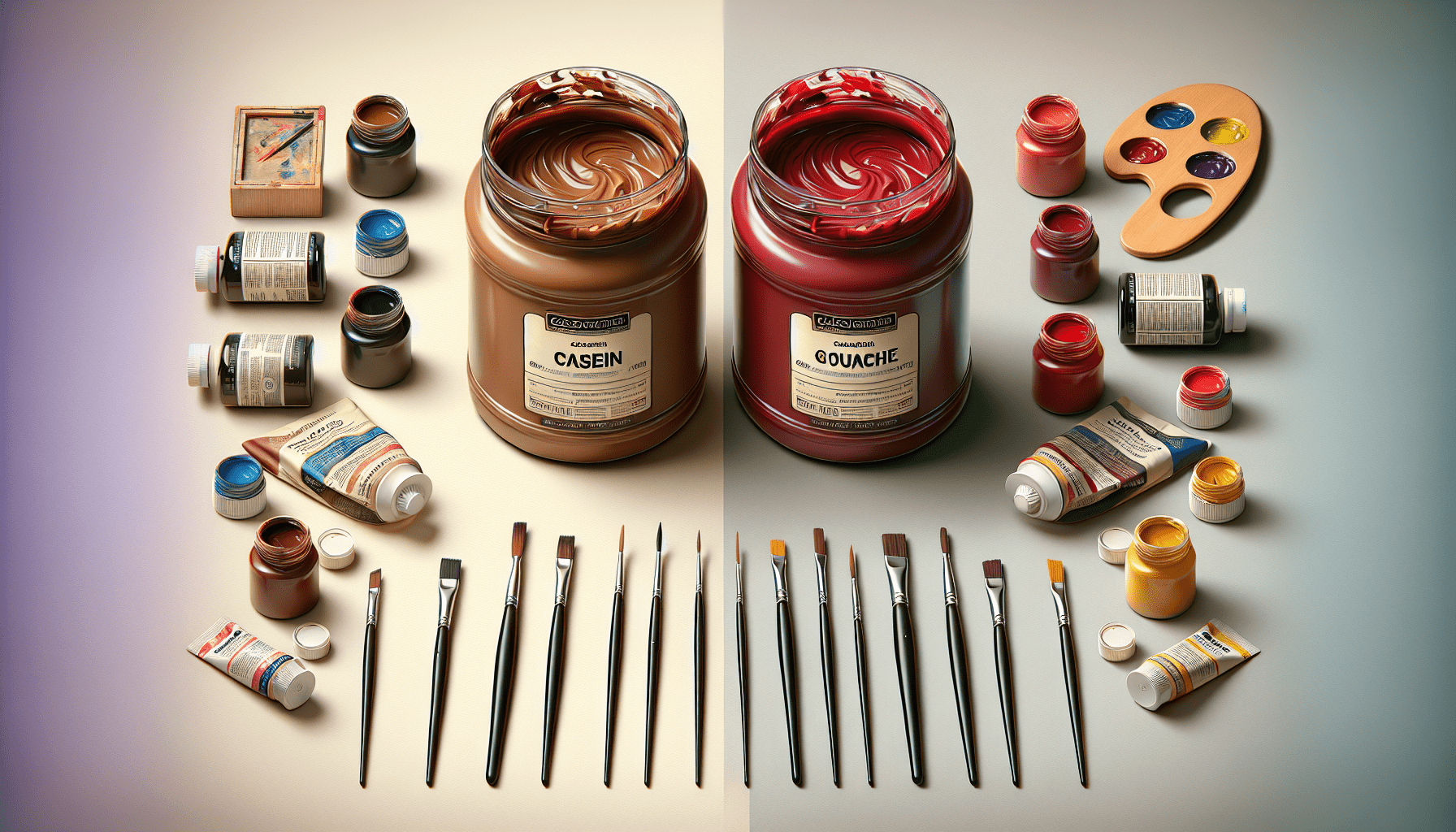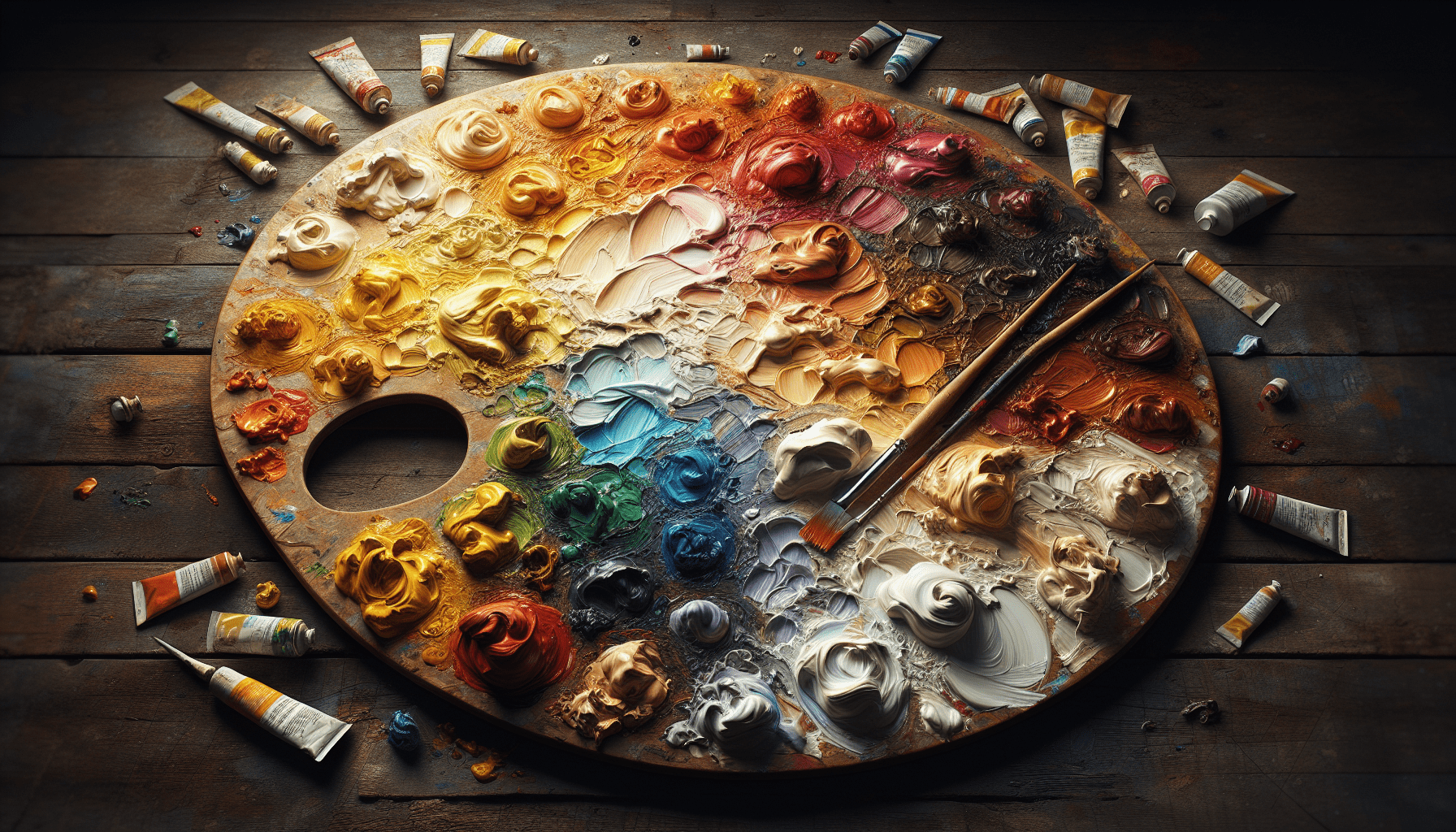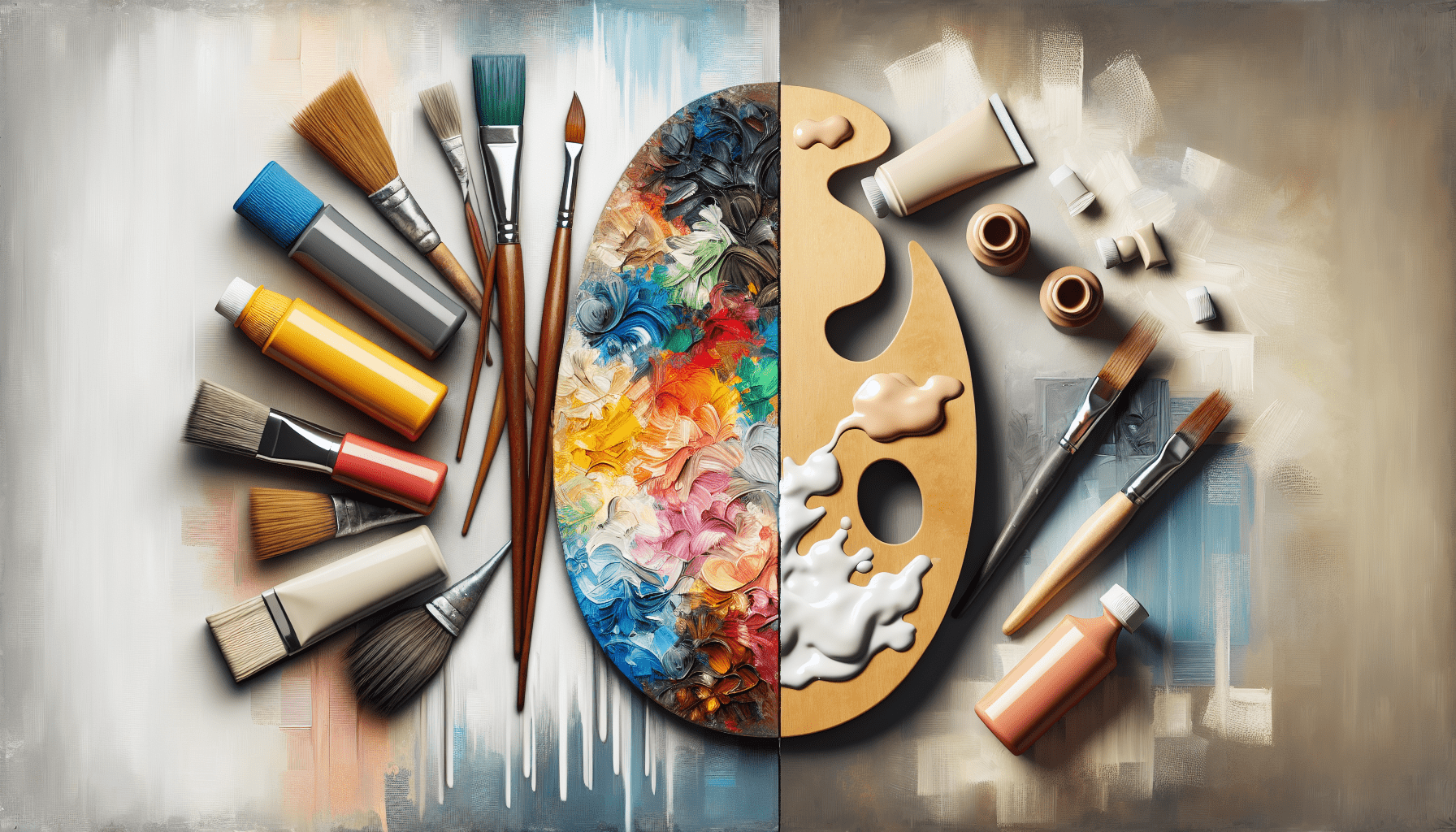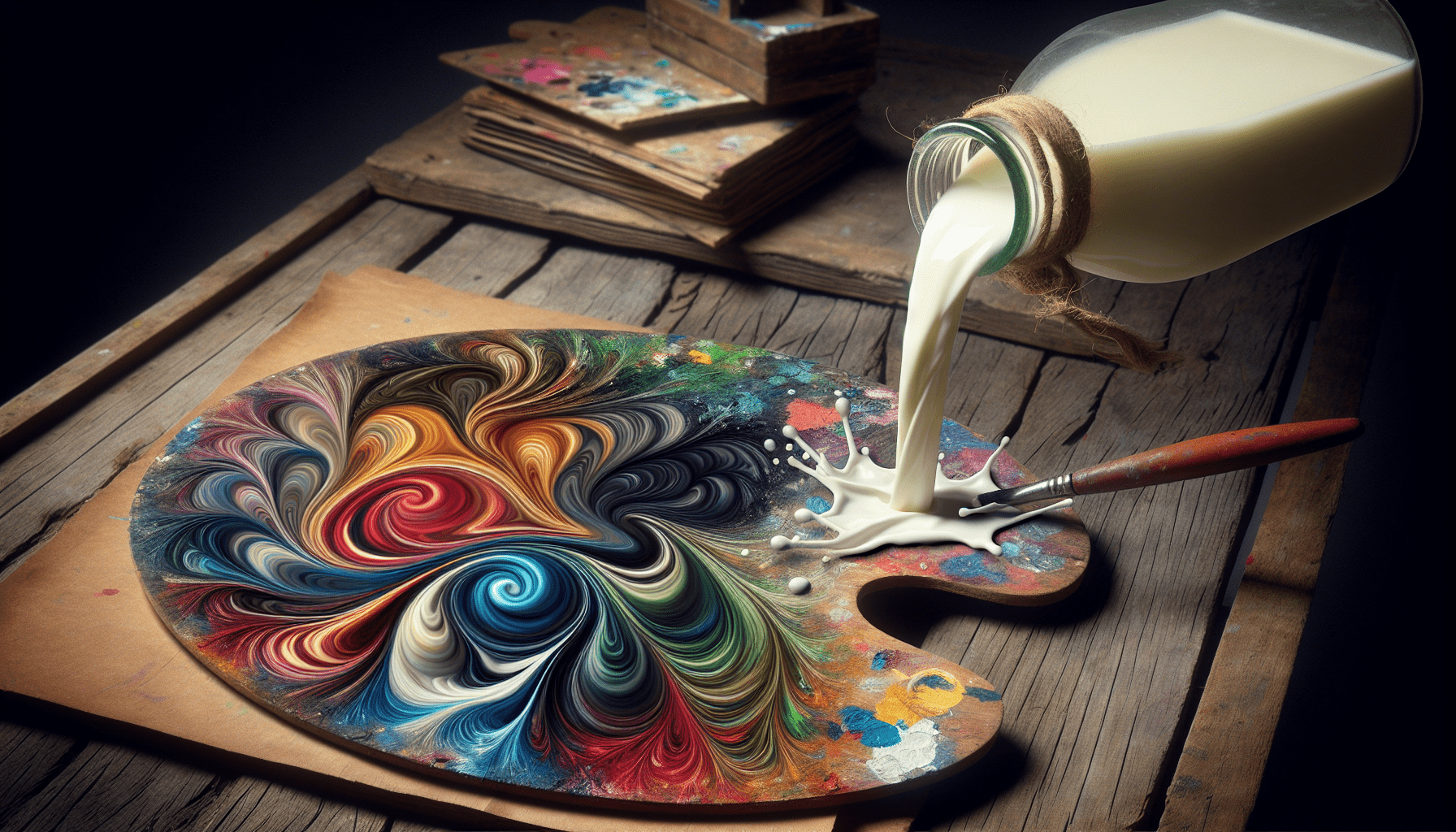Have you ever found yourself staring at a row of paints in an art supply store, wondering what the difference is between casein and gouache? As you explore the vast world of painting mediums, understanding the nuances between different paint types can enhance your artistic decisions and outcomes. This article examines the differences between casein and gouache, two popular mediums revered by artists for their unique properties and versatility. By the end of this exploration, you will have a clearer idea of which paint best suits your creative needs.
Introduction to Casein and Gouache
Before diving into the distinctions, it is important to understand what casein and gouache are and what makes them attractive to artists.
What is Casein?
Casein paint is one of the oldest known paint types, deriving its name from casein, a protein found in milk. This medium has been used for centuries, cherished for its ability to produce rich, opaque layers without the shininess of other paints. With a matte, velvety finish, casein binds through an emulsion process, making it different and more stable compared to other water-based paints. Notably, once dry, casein becomes water-resistant to a degree, allowing it to be layered without disturbing underlying coats.
What is Gouache?
Gouache is a water-based paint known for its opaque, matte finish. Similar to watercolor paints but with larger pigment particles and an additional white pigment like chalk, gouache provides excellent coverage and vibrant color. Artists appreciate gouache for its flexibility, as it can be utilized in both transparent washes and solid coloration. The ease of reactivating dried gouache with water also provides artists with unique opportunities for reworking sections of art without hassle.
The Composition of Casein and Gouache
Understanding the composition of these paints can further clarify their characteristics and applications.
Ingredients of Casein Paint
The primary ingredient in casein paint is the casein protein, extracted from milk, usually combined with lime or an alkaline substance to create a binding agent. Adding pigments and water forms the paint you purchase, producing a consistency similar to tempera. Occasionally, oils or other additives are mixed to enhance certain properties like glossiness or drying time.
Table 1: Ingredients in Casein
| Ingredient | Description |
|---|---|
| Casein Protein | Main binder derived from milk |
| Alkali Substance | Used to dissolve casein protein |
| Pigments | Ground substances that provide color |
| Water | Solvent to create paint consistency |
Ingredients of Gouache
Gouache usually consists of color pigments, a binding gum (such as gum arabic), and often an opacifying agent – such as chalk. These components imbue gouache with its signature opaque quality. The inclusion of pigment and binding agents gives the paint its thick, flowy, and spreadable consistency.
Table 2: Ingredients in Gouache
| Ingredient | Description |
|---|---|
| Pigments | Provide the color in gouache |
| Gum Binder | Often gum arabic, holds pigment particles together |
| Opacifier | Typically chalk, increases opacity |
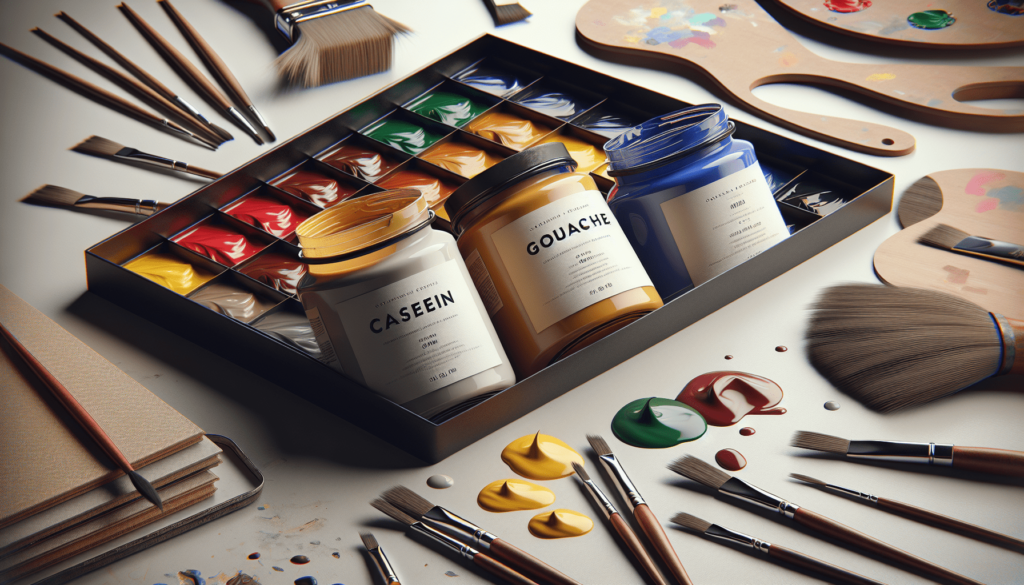
Differences in Application Techniques
The choice of medium often affects application methods and techniques, influencing style and ultimate visual outcome.
Application Techniques of Casein
Casein paint’s quick-drying nature makes it ideal for precise detail work, offering crisp lines and edges. Brushes can be used dry or slightly damp to enhance the application, providing nuances not achievable with wetter mediums like watercolors. It’s also possible to layer washes or apply thick impasto techniques, though the paint’s limited flexibility may restrict extreme textural experimentation.
Application Techniques of Gouache
Gouache differs by allowing a mix of watercolor-like washes and opaque layers, giving artists tremendous range. You can thin gouache with water to achieve translucent effects or use it at full strength for vibrant hues. The ability to reactivate gouache with water provides a level of fluidity and forgiveness, making it easier to make changes after the paint has dried.
Differences in Drying Time and Finish
The paint’s drying time and final appearance can greatly determine its practicality and aesthetic appeal.
Casein’s Drying Time and Finish
Casein paints dry relatively quickly to a uniform, matte finish. The advantage of this rapid drying time is that it limits work interruptions and facilitates the layering of paints without blending underlying layers. Once dry, the durability of casein offers a degree of water resistance, although intense exposure to moisture can eventually alter the surface.
Gouache’s Drying Time and Finish
Gouache generally dries faster than oil paints but slower than regular acrylics or casein. This property can be beneficial for artists requiring time to adjust their work. Despite its matte finish, dried gouache remains more susceptible to water, allowing rework but also necessitating careful handling to avoid smudging or unintended blending.
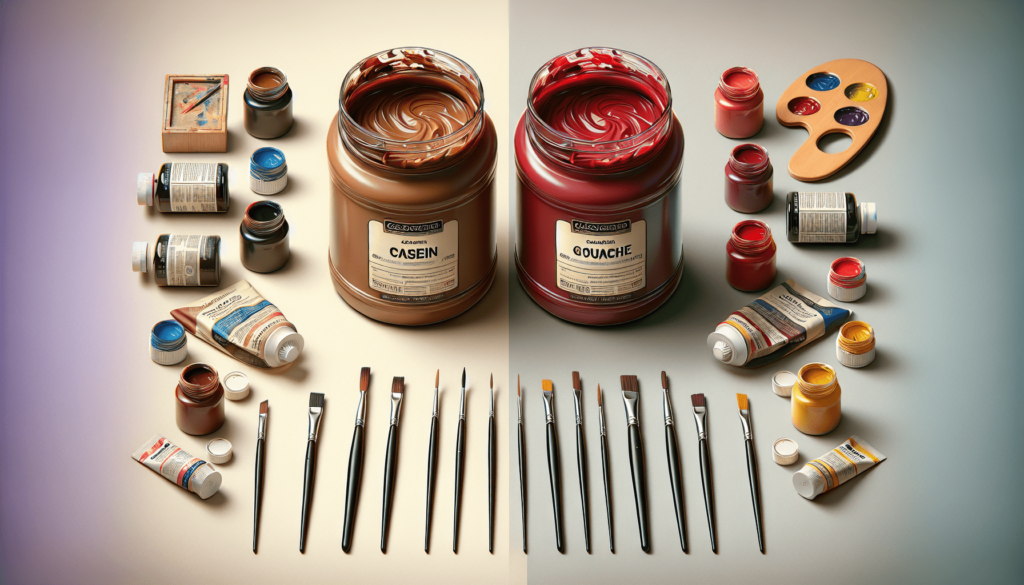
Versatility and Use Cases
Knowing where and how each medium thrives can help you decide which to incorporate into your repertoire.
When to Use Casein
Casein is particularly advantageous for artists seeking to produce matte works rapidly without waiting long for drying. The medium is operational in graphic design, commercial illustration, and plein air painting. Due to its archival quality when properly sealed, it is also chosen for fine art projects requiring long-lasting durability.
When to Use Gouache
Gouache shines in projects demanding flexibility and vibrant, flat colors. It is favored in illustration, poster art, and animation for its vivid impact and the ease with which corrections can be made. The paint’s versatility allows for a quick switch between stark contrasts and soft gradients, proving beneficial in numerous creative fields.
How to Choose Between Casein and Gouache
Selecting between casein and gouache depends on your artistic objectives, project requirements, and personal preferences.
Factors to Consider
- Effect Desired: If aiming for a velvety matte finish that resists water, go for casein. In contrast, choose gouache for a more traditional matte look with versatility.
- Drying Time: Prioritize casein if swift drying times and permanence are vital. Opt for gouache if you need slower drying for easier manipulation.
- Reworking Capabilities: Gouache enables easy reworking, unlike the more permanent casein once thoroughly dried.
- Surface Compatibility: Consider the surfaces you regularly work with; casein adheres well to both non-oily surfaces and prepared grounds, while gouache is best on papers designed to handle water media.
Conclusion
Understanding the differences between casein and gouache empowers you to pick the right paint for your artistic endeavors. While both offer unique characteristics—casein with its rich viscosity and gouache with its manipulation ease—your decision ultimately depends on your specific project needs and creative style. By comprehending these distinctions, you ensure that your chosen medium complements the beauty and intention behind each brushstroke.
